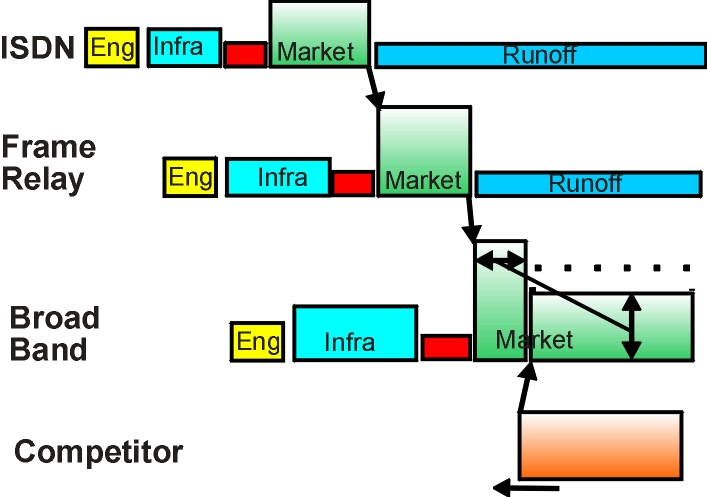

The model shows the introduction of three waves of communications technology, viz.
ISDN
Frame Relay
Broad Band or Full Service Network
A telco will usually introduce technology in an orderly manner, with engineering and infrastructure costs amortised over the market life, before introducing a new technology. The strategy is complicated by a competitor who has no investment in the previous technology. The telco can stick to the usual pattern, which allows the competitor to grab a larger share of the broad band market by being first, or head off the competitor and either waste investment in preceding waves, or skip a wave.
The market activities are linked, so moving the Frame Relay project back reduces the length of the ISDN market activity, reducing the return on that project.
For cable, there is an initial large market if you are first to market, and the final market share is dependent on how much earlier than the competitor you entered the market. If you delay your introduction until after the competitor, your long term market share is reduced, even though you got better returns on previous technology investments. Each new infrastructure investment is usually larger than the last, and the resulting market is larger than the last.
The model demonstrates activity with duration dependent on relative starting positions of other activities and resource usage dependent on duration of another activity. The two statements that create these conditions are:
InitialMarket_DU = MAX(0,Competitor_SD - InitialMarket_SD)
CompMarket_Cash = InitialMarket_Cash * (0.5 +0.01*InitialMarket_DU)
The rest of the model is built using CPM style activity and resource interfaces. You can estimate the entry of the competitor in the market, then use the model to explore your options in terms of your own projects, and the potential cashflows that might result from different timings.